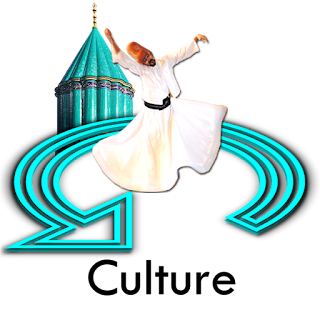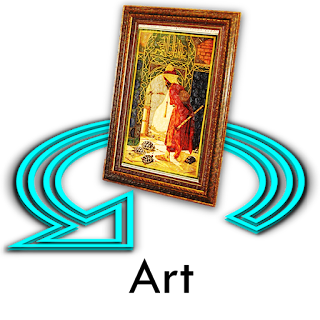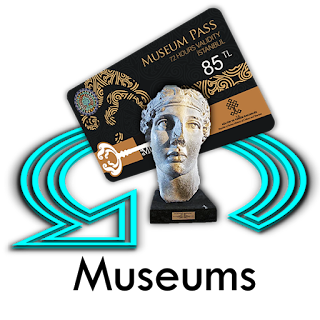Home to numerous communities and civilizations from the beginning of history, Anatolia is also the harbor of the magnificent Turkish culture.
Turkish culture which has evolved under the influence of various communities over the centuries and spread over the extensive lands of Anatolia attracts the attention for its unique elements. At the crossroads of the East and the West, Turkish culture, from its cuisine to social life, bears the traces of different cultures.
The Paleolithic prehistory of Turkey is potentially of enormous interest to paleoanthropologists.
Anatolia is the most direct land route into Europe from the Levantine corridor and, more distally, from Africa. Repeated movements of human populations from Africa into Eurasia, and perhaps In the opposite direction as well, reconstructed on the basis of genetic evidence, 1-6 would surely have left traces in the archeological record of Anatolia.
Great Architect Sinan is considered the greatest Ottoman architect of the Ottoman Empire's
Architectural heritage.During the construction of the Sokollu Sinan receives a great deal of pressure from Sultan Selim II, son and successor to Sultan Suleyman, to progress what is to be Sinan's monumental masterpiece, The Selimiye Complex in Edirne (1568-74). As described …"tall minarets announce the city of Edirne from its endless landscape and from as far as the eye can see. The mosque dominates and crowns the highest elevation, looking down on a city articulated by domes and minarets of other massive buildings."
Fine arts which have been produced since mankind’s earliest days are an integral part of Turkish culture too.
Islamic Art varies substantially from Western Art due primarily to restrictions in the Koran on depicting the human form. Rather than being representational of the profane world, the perfection of Ottoman art lies in the pure balance of color, line and rhythm in geometric patterns and designs.Westernization in Turkey was begun by Sultan Mahmud II at the beginning of the nineteenth century, and took root during the reigns of the sons of Sultan Mahmud II, Abdülmecid (1839-1861) and Abdülaziz (1861-1876). The westernization of Turkish painting accelerated in those years and these art works can be seen from the reign of Abdülhamid II and at the time of the Constitutional Monarchy (second Meşrutiyet). Thus, Turkish painting has been developed until today through the cultural policy, which integrated Turkish art with the modern and civilized world, followed by the Republic period.
The art of Turkish tiles and ceramics occupies a place of prominence in the history of Islamic art.
Its roots can be traced at least as far back as the Uighurs of the 8th and 9th centuries. Its subsequent development was influenced by Karakhanid, Ghaznavid, and (especially) Iranian Seljuk art. With the Seljuks' victory over the Byzantines at Malazgirt in 1071, the art followed them into Anatolia and embarked upon a new period of strong development fostered by the Anatolian Seljuk sultanate. Emirate-period tiles are generally a continuation of Seljuk techniques with one important exception: the introduction of the cuerda seca technique, which was subsequently developed by the Ottomans.
The earliest examples of this group are dated to the late 14th and early 15th centuries. The late 15th and early 16th century marks the beginning of a new period in Ottoman tile and ceramic-making. The most important center active at this time was Iznik.
By the 18th century, the ceramic industry in Iznik had died out completely and Kutahya replaced it as the leading center in western Anatolia.
To summarize, the art of Turkish tile and ceramic-making developed over the centuries incorporating many different techniques and styles. Enriched by the arrival of the Seljuks, the ceramic industry in Anatolia achieved a deservedly worldwide reputation with the support of the Ottoman court. Today, Kutahya has been revived as an important center of tile and ceramic-making. In addition, efforts are also being made in private workshops and educational institutions in Iznik, Istanbul, and Bursa to keep the art of traditional Turkish tiles and ceramics alive and develop it so that it can address the demands of modern-day life.
Islamic Art varies substantially from Western Art due primarily to restrictions in the Koran on depicting the human form. Rather than being representational of the profane world, the perfection of Ottoman art lies in the pure balance of color, line and rhythm in geometric patterns and designs.Westernization in Turkey was begun by Sultan Mahmud II at the beginning of the nineteenth century, and took root during the reigns of the sons of Sultan Mahmud II, Abdülmecid (1839-1861) and Abdülaziz (1861-1876). The westernization of Turkish painting accelerated in those years and these art works can be seen from the reign of Abdülhamid II and at the time of the Constitutional Monarchy (second Meşrutiyet). Thus, Turkish painting has been developed until today through the cultural policy, which integrated Turkish art with the modern and civilized world, followed by the Republic period.
The art of Turkish tiles and ceramics occupies a place of prominence in the history of Islamic art.
Its roots can be traced at least as far back as the Uighurs of the 8th and 9th centuries. Its subsequent development was influenced by Karakhanid, Ghaznavid, and (especially) Iranian Seljuk art. With the Seljuks' victory over the Byzantines at Malazgirt in 1071, the art followed them into Anatolia and embarked upon a new period of strong development fostered by the Anatolian Seljuk sultanate. Emirate-period tiles are generally a continuation of Seljuk techniques with one important exception: the introduction of the cuerda seca technique, which was subsequently developed by the Ottomans.
The earliest examples of this group are dated to the late 14th and early 15th centuries. The late 15th and early 16th century marks the beginning of a new period in Ottoman tile and ceramic-making. The most important center active at this time was Iznik.
By the 18th century, the ceramic industry in Iznik had died out completely and Kutahya replaced it as the leading center in western Anatolia.
To summarize, the art of Turkish tile and ceramic-making developed over the centuries incorporating many different techniques and styles. Enriched by the arrival of the Seljuks, the ceramic industry in Anatolia achieved a deservedly worldwide reputation with the support of the Ottoman court. Today, Kutahya has been revived as an important center of tile and ceramic-making. In addition, efforts are also being made in private workshops and educational institutions in Iznik, Istanbul, and Bursa to keep the art of traditional Turkish tiles and ceramics alive and develop it so that it can address the demands of modern-day life.
 |
| Zeugma Fashion Show & Kutnu Fabric - Fashion Show // Dilek Hanif // 2016. - Zeugma Mosaic Museum, in the town of Gaziantep, |
 |
| Mevlânâ Celâleddîn-i Rûmî |







































